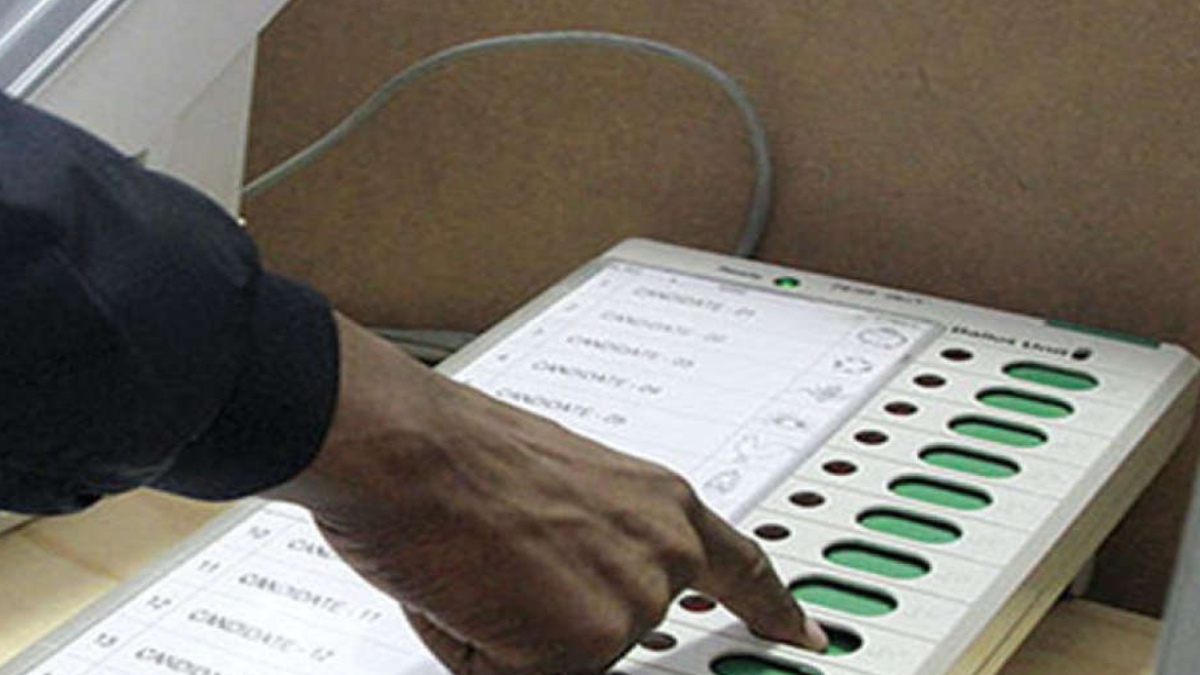The 2022 Assembly elections in the states of Punjab and Uttar Pradesh were both historic. For the first time in UP, an incumbent Chief Minister was re-elected after serving a full five-year term. In Punjab, where the Indian National Congress (INC) and Shiromani Akali Dal (SAD), who have formed alternative governments in the state since 1966, were wiped out and the Aam Aadmi Party (AAP) won its first state outside of the national capital. The Bharatiya Janata Party (BJP) which won UP in a landslide victory in 2017, won 255 out of the 403 Assembly seats in the state, with a vote share of 41.29 per cent. The leading opposition party in the state, the Samajwadi Party (SP) managed to secure 111 seats with a vote share of 32.06 per cent. In Punjab on the other hand, the AAP secured a sweeping victory, winning 92 of the 117 Assembly seats, with a vote share of 42.01 per cent. The incumbent INC was only able to secure 18 seats in the state, while the SAD managed to win three seats in the Assembly. The 2022 Assembly elections have been keenly watched by political analysts and pundits, as they are considered to be the trailer for the 2024 Lok Sabha elections. Let us break down the wins of parties in both the states and find out the biggest upsets, vote bank demographics, strike rates, and overall performance.

UP: STRIKE RATES AND SEAT SHARES
The BJP was able to retain its hold in the most populous state in the country, although its seat share declined from 312 in 2017 to 255 in 2022. However, the party’s vote share increased from 39.67 per cent in the previous elections to 41.29 per cent in this election. The SP, which had performed abysmally in the 2017 elections, managed to improve its performance in 2022, securing 111 seats with a vote share of 32.06 per cent as compared to 47 seats and a vote share of 21.82 per cent that it secured in 2017. Prior to the election, many analysts had noted the muted campaigning from the Bahujan Samaj Party (BSP). The party’s footprint declined exponentially in the state, and it only managed to secure one seat in the 403 member Assembly. The party’s vote share in the state also declined by 9.35 per cent to 12.88 per cent in 2022—its worst performance since 1991. Despite Priyanka Gandhi’s active campaigning in the state, the INC was also reduced to a bystander in the state, getting two seats in the Assembly and a vote share of a mere 2.33 per cent.
PUNJAB: AAP’S SWEEPING VICTORY ACROSS REGIONS



Overall, out of the 403 seats, 131 seats were closely contested, with victory margins of less than five per cent. The BJP-led National Democratic Alliance (NDA) won 74 of these 131 seats while the SP+alliance won 55 of these seats. Overall, the average victory margin for the BJP was 13 per cent while the same for SP was eight per cent%. When talking about strike rates, we observe that the BJP’s decision to ally with the Apna Dal (Sonelal) and Nirbal Indian Shoshit Hamara Aam Dal (NISHAD) as its partners paid off. The party contested 93 per cent of the 403 constituencies, managing to win 255 of the 376 seats it contested, bringing its strike rate to 67.8 per cent. BJP’s alliance partner, AD(S) won 12 out of the 17 seats it contested (71 per cent strike rate), while the NISHAD party won six out of the ten seats it contested (60 per cent strike rate). The NDA’s seat-sharing formula with its allies, targeting specific regions, clearly paid off and worked in their favour.
The SP contested 86 per cent of the 403 seats in the Assembly and won 111 of the 347 seats it contested. The party’s strike rate was significantly lower than the BJP at 32 per cent. SP’s largest ally, the Rashtriya Lok Dal (RLD), which enjoys wide-scale support of the farming and Jat community only won eight seats, securing a strike rate of 24 per cent. Similarly, other alliance partners such as the Suheldev Bharatiya Samaj Party (SBSP), which had allied with the NDA until 2020, only managed to win six seats with a strike rate of 32 per cent. The SP had joined hands with regional parties such as the RLD, SBSP etc in an attempt to extend its support base from its traditional Muslim-Yadav (MY) vote bank, and while its allies gained seats as compared to 2017, their performance was significantly lower as compared to the BJP’s allies. Both the INC and BSP had a strike rate of less than one per cent in the state.
REGIONAL AND SEAT WISE TRENDS IN UP
Comparing the seat-wise performance of the BJP and SP, we observed that 71 of the 326 seats the NDA had managed to win in 2017 were secured by the SP+ in 2022. Similarly, the INC also managed to flip one seat. Out of the 48 seats won by the SP and RLD combined in 2017, 11 switched to the NDA in these elections. The BSP, which won 19 seats in 2017, only retained one in 2022, and the SP won 13 of those seats, while the BJP won five. When trying to analyse the shift in the BSP’s traditional Dalit vote bank, one has to look at the performance of the parties on reserved seats. In total, 84 seats are reserved for Scheduled Castes (SCs) and two for Scheduled Tribes (STs). In 2017 and 2022, the NDA won both seats reserved for STs in the state. Out of the seats reserved for SCs, the NDA won 74 out of the 84 seats in 2017; however, in 2022, it only managed to win 63 of those reserved seats. Similarly, the SP alliance won 20 of those reserved seats in 2022, as compared to the seven it won in 2017. The average winning margin for the BJP in SC seats was 28,667 as compared to the SP which had a winning margin of 13,967. According to political analysts, this difference clearly indicates that the Dalit votes that shifted from BSP, when to the BJP in higher volume as compared to the SP.




The regional performance of the BJP in the state shows that despite the narrative of the farmers’ sentiment against the BJP, due to the farmers’ protests, the BJP managed to secure its performance in both Western UP and Doab. The party secured 30 seats in Western UP, which was eight lower than it secured in 2017, while it managed to secure 55 seats in Doab. The SP+ alliance was able to improve its performance in the region, winning 15 seats in Western UP (an increase of 11) and 16 in Doab (an increase of eight). The SP was also able to stage a comeback in Bundelkhand, which has 20 seats. In 2017, the BJP had won all 20 seats in the region, however, this time around, it only secured 14 seats, while the ADAL (S) won seats and the SP won three. In Purvanchal, the NDA lost 19 seats as compared to 2017, while in Central UP (Awadh) the NDA lost seven seats.
The AAP, which had not yet been able to win any state outside of the national capital, managed to secure a sweeping victory in Punjab. The Arvind Kejriwal-led party won 92 out of the 117 seats in the Assembly, managing to secure 42.01 per cent of the votes. The party’s victory was the largest ever by any party in the state since its reorganisation in 1966. The INC, which had nestled the state out of the hands of the BJP-SAD alliance in 2017 after a ten-year rule, was only able to secure 18 seats with 22.98 per cent of the votes. Similarly, the SAD which was once a principal opposition party managed to win only three seats, while the BSP won one seat and the BJP won two. The last remaining seat was won by an independent candidate. The results clearly showed that Sanyukt Samaj Morcha, a political outfit floated by various farmer bodies, failed to make any mark. Similarly, the Punjab Lok Congress formed by former Chief Minister Capt. Amarinder Singh also failed to make a mark, and the former Chief Minister also lost his seat to an AAP candidate from Patiala.
While the AAP had managed to secure 20 seats in the 2017 Assembly polls, emerging as the second-largest party in the Assembly, its performance was driven by the Delhi model of governance, high anti-incumbency in the state, and overall infighting and factionalism in the Congress was stellar across almost all regions in the state. One of the biggest regions in the state, the Malwa region, which covers 69 Assembly seats, was swept away by the party, as it won 66 out of the 69 sets. In 2017, the INC had won 40 seats in this region. Analysts believe the AAP’s promise to bring about change in the state resonated with voters in the region.
Similarly, the Doaba region, which encompasses the districts of Jalandhar, Hoshiarpur, Nawanshahr, and Kapurthala, has 23 seats in the Punjab Assembly. The AAP had only managed to win two seats from this region in 2017. However, this year, the party was able to increase its tally to ten. The Majha region, which includes districts such as Amritsar, Tarn Taran, Gurdaspur, and Pathankot districts, comprises 25 Assembly seats. The AAP could not win any seats in this region in 2017; however, in 2022, they won around two third of the seats in the region, winning seats such as Amritsar East, where analysts and pundits had completely written off the party.
Some of the biggest upsets for the INC and other parties include the loss of incumbent Chief Minister Charanjit Singh Channi. Channi lost from both seats he contested in the Assembly polls, including Chamkaur Sahib, which he represented in the Assembly since 2007.
INC’s Punjab president Navjot Singh Sidhu also faced embarrassment as he lost to AAP’s Jeevan Jyot Kaur by 6750 votes. Jagroop Singh Gill of Aam Aadmi Party won the seat by defeating Manpreet Singh Badal, a part of the Badal family and the current finance minister from the INC with a margin of 63581 votes.
Former CM Captain Amarinder Singh lost from his bastion of Patiala Urban- a seat which he has won 4 times in the past. AAP’s Ajit Pal Singh Kohli defeated him by a margin of 19,873 votes. Overall, of the 85 new MLAs out of 117 in the assembly, 82 are from AAP. The state assembly will also, for the first time in decades, witness the absence of some seasoned politicians who called the shots for long.







